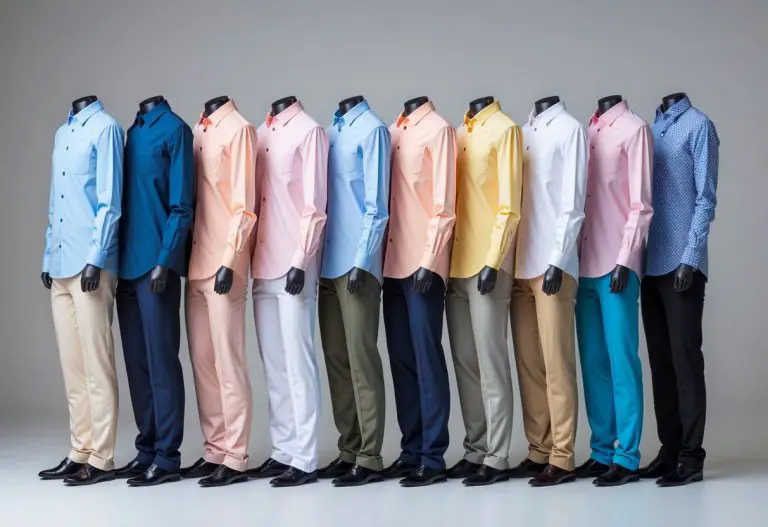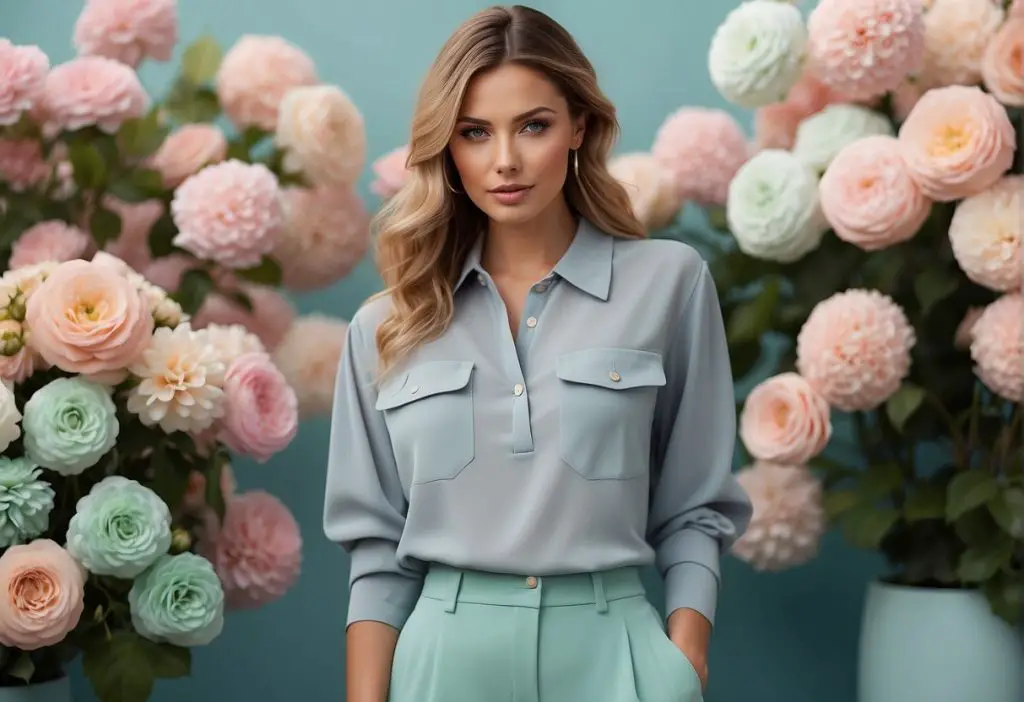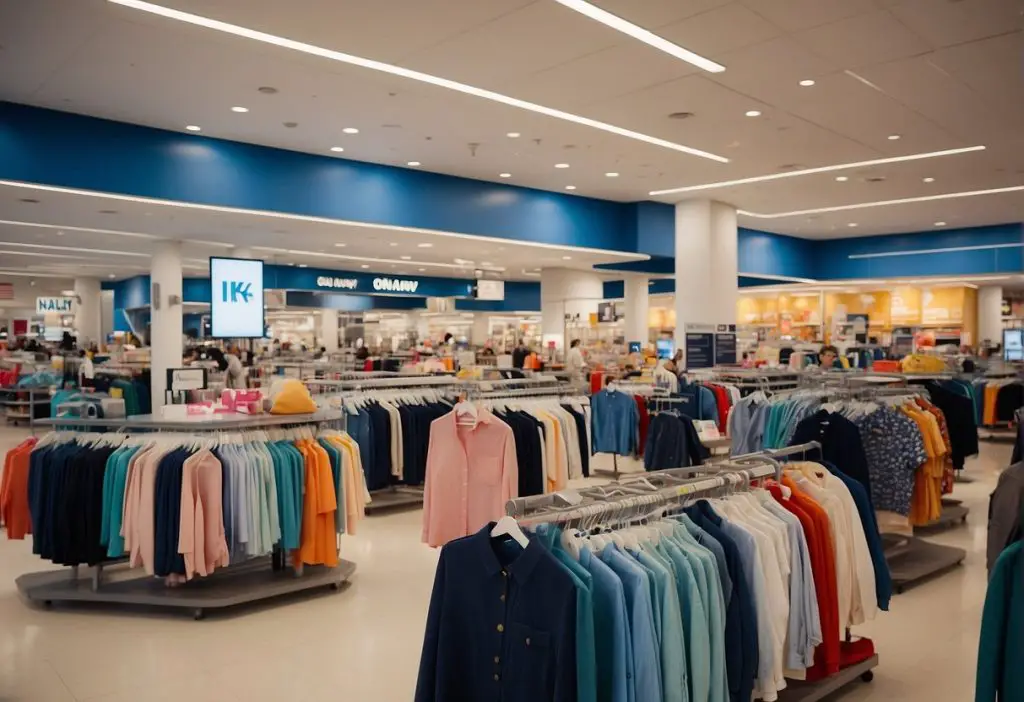Picking good shirt and pants color combinations can help you look your best without much effort. The easiest way to match your shirt and pants is to pair neutral colors like white, black, gray, navy, or beige with almost any other color. You can also try classic mixes, such as a white shirt with blue jeans or a light blue shirt with khaki pants.
If you want to stand out, choose bolder colors but keep one item neutral. Keep your look balanced by avoiding colors that clash. Knowing how to put colors together can make dressing each day much simpler.
Key Takeaways
- Learn how to choose shirt and pants color combinations that work.
- Find the best mix of classic and modern color options.
- Get simple tips for looking good with easy color choices.
Best Shirt and Pants Color Combinations
Shirt and pants colors can change how your outfit looks and feels. The best combinations fit the occasion, match your style, and coordinate well with each season.
Classic Color Pairings
Classic combinations use simple and timeless colors. These pairings work for many situations, like work, school, or casual outings.
Some examples include:
- White shirt with navy blue trousers or black pants: This is always sharp and professional.
- Light blue shirt with khaki pants: This pairing is popular for both business and everyday looks.
- Gray shirt with black pants: Clean and neutral, this look is hard to mismatch.
For a quick reference, see the table below:
| Shirt Color | Pants Color | Occasion |
|---|---|---|
| White | Navy/Black | Business/Formal |
| Blue | Khaki | Business Casual |
| Light Gray | Charcoal | Office/Casual |
| Black Shirt | Gray | Dinner/Evening Events |
These options are safe choices if you want your outfit to look put together with little effort.
Modern Color Mixing Ideas
Modern color combinations let you add personality and creativity to your outfits. Mixing new shades creates a fresh style.
You might try:
- Olive green shirt with tan or cream pants for an earthy, relaxed look.
- Pastel pink shirt with light gray trousers for a soft, trendy vibe.
- Deep burgundy shirt with navy pants for a bold, confident effect.
If you want to use brighter shirts, pair them with muted pants. For example, try a yellow shirt with dark jeans. Avoid too many loud colors at once. Keep at least one part of the outfit neutral for balance. Adding patterns, like stripes or subtle checks, can make the outfit more unique.
Seasonal Color Coordination
Choosing colors by season helps your outfit fit the time of year. Lighter, brighter colors usually work well in warm months. Deeper, richer colors suit colder seasons.
In spring and summer:
- Try light blue, mint green, or pale yellow shirts with beige or white pants.
- Short-sleeve shirts with light trousers look cool and comfortable.
In fall and winter:
- Wear burgundy, forest green, or mustard shirts with brown pants, navy, or charcoal trousers.
- Thicker fabrics and darker shades add warmth.
Matching your shirt and pants colors to the season keeps your outfits fresh and appropriate. Use layers and textures for added style in colder weather.
Styling Tips for Shirt and Pants Colors
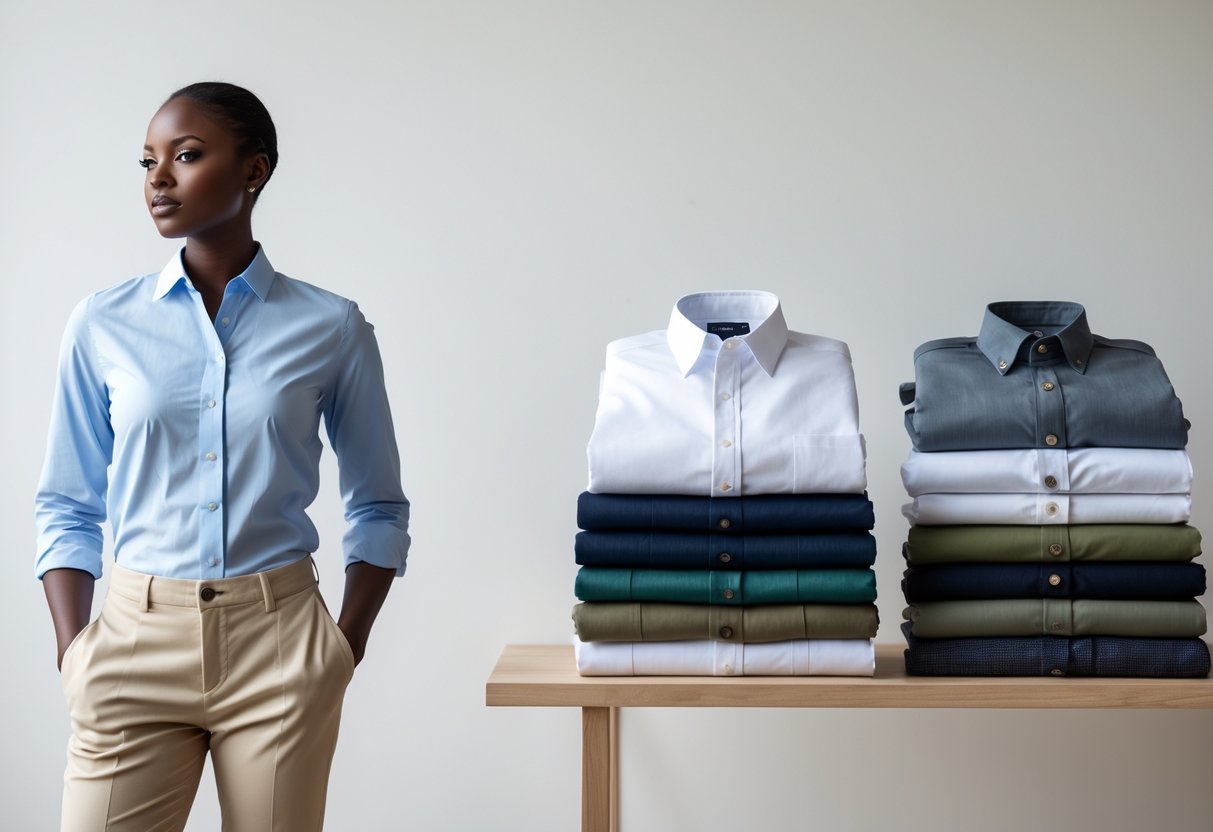
Matching your shirt and pants depends on your skin tone, the color balance in your outfit, and avoiding clashing or dull combinations. Using a few basic color principles can make the process much easier.
Choosing Colors for Skin Tone
Your skin tone affects how different colors look on you. Fair or light skin usually looks best with mid-tone colors like olive, medium blue, teal, or rust. Avoid pale shades that can wash you out.
Medium skin tones work well with rich jewel tones—like emerald, sapphire, and burgundy. Avoid overly similar colors to your skin, such as tan or beige.
For darker skin tones, bright and bold colors stand out nicely. Colors like white, yellow, pink, and pastel shades can highlight your features. These suggestions can help guide your choices:
| Skin Tone | Good Shirt Colors | Good Pant Colors |
|---|---|---|
| Light | Blue, teal, rust | Olive, navy, brown |
| Medium | Emerald, burgundy | Charcoal, khaki, navy |
| Dark | White, pink, yellow | Black, gray, tan |
Make adjustments to suit your preferences and try options within these guidelines to find what looks best.
Balancing Neutrals and Bold Colors
Pairing neutral pants and bold colors helps you look put together. Neutrals—like black, white, navy, gray, beige, and brown—are easy to match and make your outfit less busy.
If you want to wear a bright shirt, keep your pants a simple color such as navy or gray. For bold pants, try a neutral shirt in white, black, or light blue. Avoid combining two bright or bold colors, which can be hard on the eyes.
Some good pairs look like this:
- Navy pants + white shirt
- Beige pants + dark green shirt
- Gray pants + burgundy shirt
Sticking to one bold piece at a time makes your outfit balanced and easy to wear.
Avoiding Common Color Mistakes
Certain color choices can quickly make an outfit look mismatched. Don’t wear shirts and pants that are nearly the same color, like all-black or all-navy, unless there is a clear contrast in shade or texture. This can look flat and dull.
Avoid wearing two clashing bright colors, like red and green or purple and orange. Too many patterns or very loud prints together can also be overwhelming.
- Make sure black and brown tones are different if worn together.
- Don’t mix warm tones (like orange) with cool tones (like blue) unless they complement well.
- Check clothing in natural light to see how colors appear.
By avoiding these common mistakes, you can make sure your style looks intentional and put-together.
Frequently Asked Questions
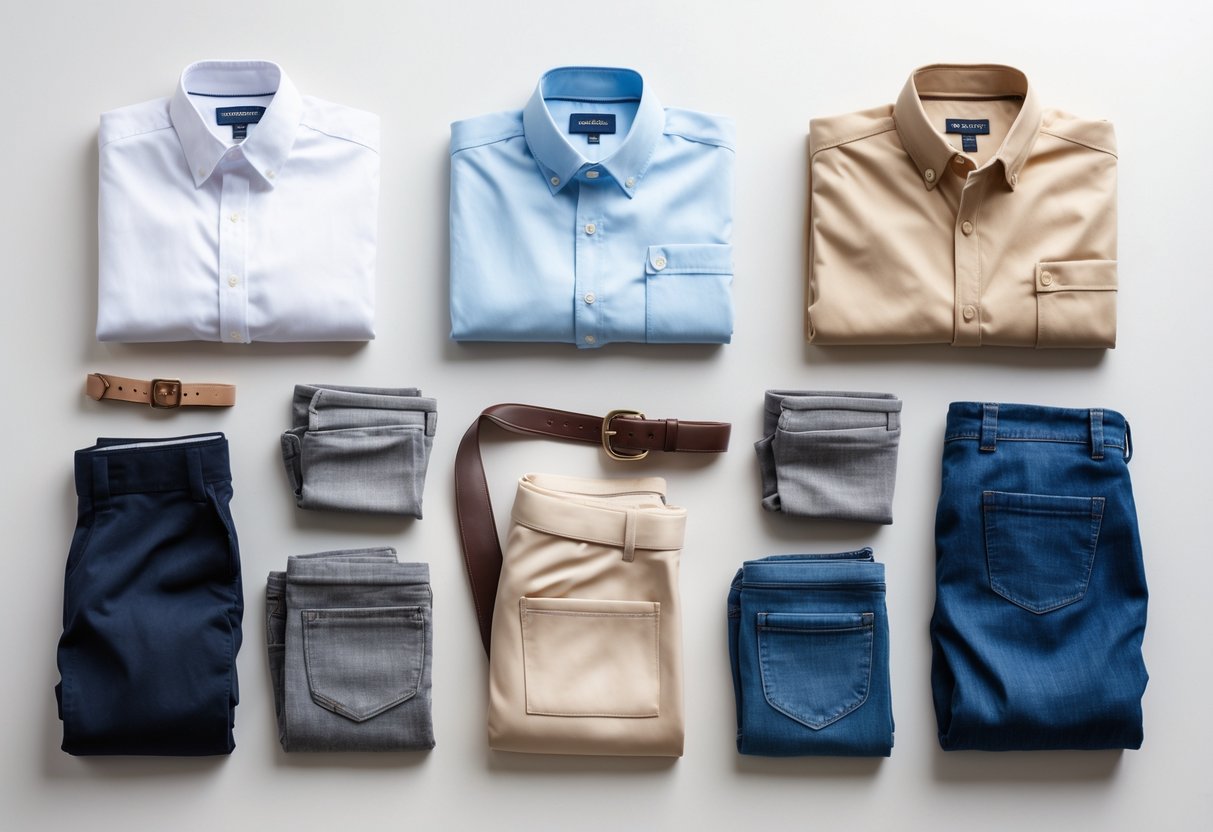
You can make many stylish outfits by picking the right shirt and pants colors for your needs. Each setting—formal, professional, casual, or for kids—has options that work well and are easy to follow.
What are classic color combinations for men’s formal attire?
For the best formal events, you can choose a white or light blue shirt with dark pants such as navy, charcoal, or black. Light gray pants also go well with a crisp, white shirt. Avoid bright colors and stick to timeless shades for a neat appearance.
How can women match shirt and pants colors for a professional look?
Pairing a white, cream, or light blue blouse with black, navy, or gray pants gives you a clean and businesslike look. Soft colors like blush or pale green can also work with dark slacks. Solid colors usually look more formal than prints.
What are popular shirt and pants color pairings for boys?
Blue jeans with white, gray, or red shirts are popular choices for boys. Khaki pants also go well with navy, green, or striped shirts. These mixes keep outfits simple and classic for everyday wear.
Can you provide visual examples of effective pants and shirt color matches?
A light blue shirt with dark navy pants shows a classic match. A white shirt and charcoal slacks make a sharp look for both school and work. For casual days, a gray shirt with tan pants works well.
What are the top color trends for casual shirt and pant outfits?
Earth tones like olive green, tan, and brown are seen often in casual wear. Light-wash jeans with pastel shirts, such as soft pink or mint, are stylish and easy to find. Muted shades tend to be more flexible than bold or neon colors.
How do you choose complementary shirt and pants colors for different occasions?
For formal events, use darker pants with light shirts. Business casual lets you add some color, but still avoid very bright combinations. For weekends or relaxed gatherings, you can try bolder pants and mix with patterned shirts or with plain shirts.
